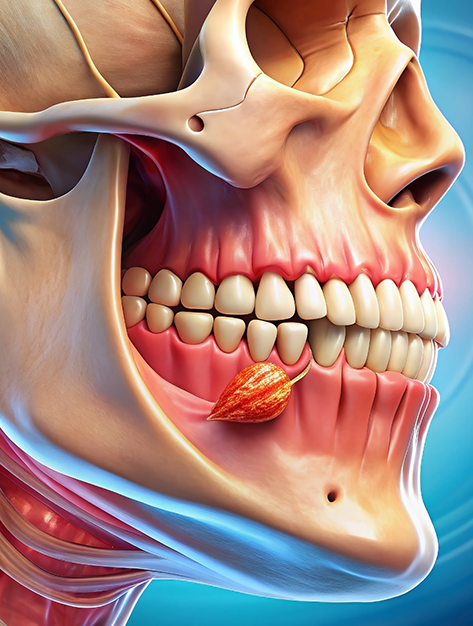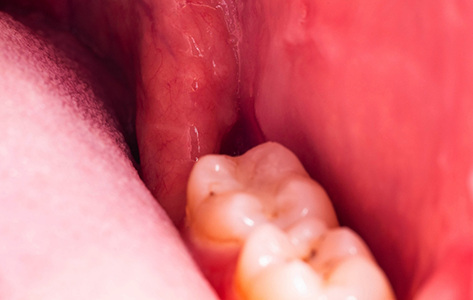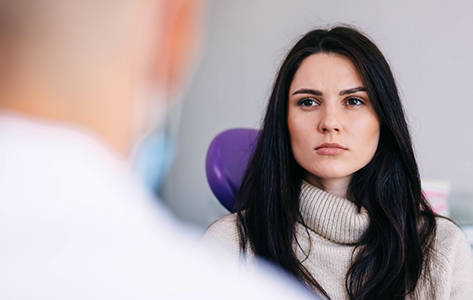Dry Socket Houston
Prevention & Pain Relief Tips for Healing After Oral Surgery

At Piney Point Oral & Maxillofacial Surgery of Houston, the oral surgeons deliver a range of treatments, including traditional tooth extractions and wisdom tooth removal. After your tooth extraction is complete, the oral surgeon will provide you with thorough aftercare instructions to ensure you make a complete recovery. Although, it’s important to understand that complications from tooth extraction can occur.
If you experience pain or discomfort following tooth extraction, the odds are good that the culprit is dry socket. This common condition occurs when the blood clot that should protect the extraction site either doesn’t develop or is dislodged.
While dry socket can be painful and lead to a lengthier healing time, the team at Piney Point Oral & Maxillofacial Surgery of Houston can provide the help you need to jump start the healing process once more. On this page, you can review the common risks for and causes of dry socket and how your oral surgeon can help you when it happens. If you have concerns, or experience post-operative pain, contact us today.
Why Choose Piney Point Oral & Maxillofacial Surgery of Houston for Dry Socket Treatment?
- Timely & Effective Pain Management for Dry Socket
- Team of Highly Qualified & Experienced Oral Surgeons
- Over 800 Patient Reviews & a 4.9-Star Rating on Google
What Is Dry Socket?

Clinically known as alveolar osteitis, dry socket is a common complication of tooth extraction surgeries. While any tooth extraction can lead to dry socket, it is most common in lower jaw wisdom tooth extractions. After a tooth is removed, the surgical area should form a blood clot as the tooth extraction site heals. When the clot is disturbed, lost, or does not form, this can significantly impede the healing process and cause severe pain. When a clot is in place, the nerve and bone below the gum line are protected, but without the clot, the exposed nerve will be painful.
Every person has a unique experience, and discomfort can range from mild to severe. While the pain associated with dry socket can be serious, the more significant concern from a medical standpoint may be the delay in healing. The blood clot brings the necessary nutrients to the extraction site to promote healing. If the blood clot never forms or is dislodged early in the healing process, your oral surgeon in Houston will likely recommend placement of a dressing that mimics the lost blood clot, promotes faster healing, and relieves discomfort.
Causes & Risk Factors for Dry Socket

Clinical experts are still not sure exactly why some people develop dry socket after tooth extraction. However, some of the risk factors that can increase your risk of experiencing this problem:
- Any type of tobacco use: smoking, chewing tobacco, etc.
- Taking oral contraceptives or receiving estrogen therapy
- Poor aftercare
- Insufficient oral hygiene
- Infection of the gums (periodontal disease) or supportive bone surrounding the extraction site
- Having had a dry socket in the past
- Not seeking treatment for swelling or serious inflammation of the face after tooth extraction
Some of the common causes of dry socket include:
- Not treating or preventing gum disease before and after tooth extraction
- Using a straw, rinsing, spitting, or smoking a cigarette too soon after the extraction
- An untreated infection with low-grade fever or swollen glands prior to or after surgery
Signs & Symptoms of Dry Socket

In most cases, dry socket develops two to four days after the tooth extraction, and the first symptom is usually pain. Pay attention to these indicators that let you know that the healing process has been disrupted, including:
- After the blood clot is disrupted, the underlying bone and nerve tissue are exposed, which causes moderate to severe pain and temperature sensitivity. Some pain is normal, but severe pain or discomfort that lingers or increases after the first few days can indicate dry socket.
- Sometimes the jawbone can be seen with the naked eye after dry socket forms. Even if you can’t see the supportive bone structure, you will likely see an opening in the soft tissue.
- Patients may also note bad breath with a foul smell concentrated in the surgical area. A bad taste in the mouth may also occur.
- In some cases, severe facial swelling may also occur.
Preventing Dry Socket

Following your oral surgeon’s post-operative instructions is crucial. You can reduce your risk of developing dry socket if you:
- Avoid straws. The suction can disturb the blood clot.
- Do not smoke or use tobacco. If you inhale smoke too quickly, the air movement can dislodge the blood clot. The chemicals in tobacco products may also slow down healing.
- Eat soft food. For at least a day after your surgery, you should stick to eating soft foods, like soup, yogurt, and applesauce.
- Follow your surgeon’s instructions for oral hygiene. You may have to wait a day or so before you resume brushing your teeth. When you do start brushing, be extremely careful around the extraction site.
- Dry socket is a serious and painful condition. If you suspect you have it, contact your dentist or oral surgeon right away so you can receive treatment and get back on the road to a healthy smile.
As long as you follow this advice, you should enjoy a speedy recovery after tooth extraction — without dry socket. However, if you or your child do experience pain that you think is caused by this uncomfortable condition, don’t hesitate to get in touch with your oral surgeons in Houston! Seeking treatment right away is important for your prompt healing.
Treatment for Dry Socket

You should contact your oral surgeon and allow them to take a look if you’re experiencing post-operative pain. Standard treatment for dry socket involves washing out the socket with a saline solution that removes food particles and bacteria buildup. Then, a special dressing is placed (which will need to be replaced after a few days) to protect the socket and soothe the pain in the affected area. Pain medications might also be prescribed.
Your oral surgeon might provide a medicated mouth rinse that you should use for several days to keep bacteria from the area and promote faster healing. You should also take care to keep up with your follow-up appointments. If you diligently follow your oral surgeon’s orders, you can expect to recover from dry socket in about seven to 10 days.
Wisdom Teeth Extraction Oral & Maxillofacial Pathology Oral Cancer Screenings Orthognathic Surgery Dental Implants Pre-Prosthetic Surgery Facial Trauma Treatment Apicoectomy Surgery Cleft Lip & Palate Surgery TMJ Treatment Corrective Orthodontic Surgery Sleep Apnea Treatment Cosmetic Facial Treatments Anesthesia & Sedation Dentistry Emergency Dentistry View Our Services

